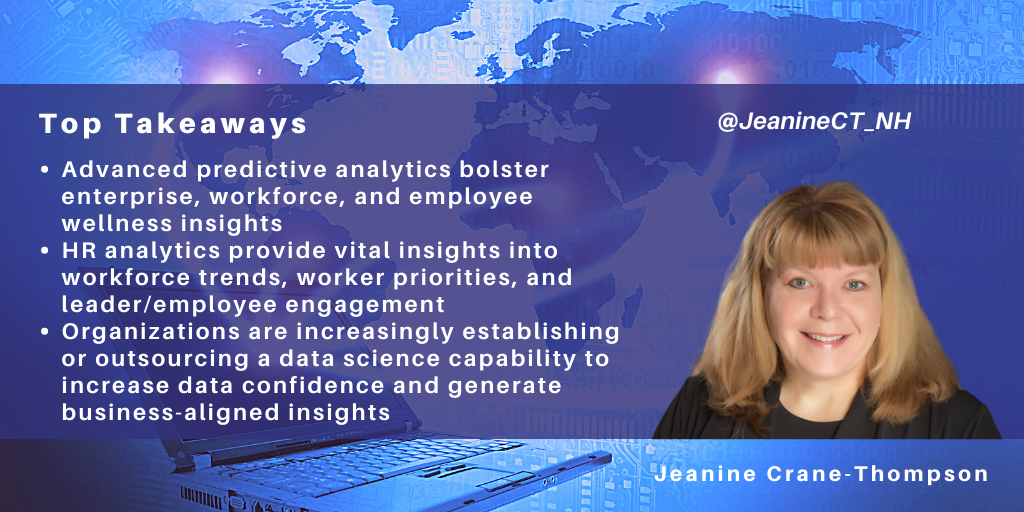Search posts by keywords:
Filter posts by author:
Related Reports
Related NEAT Reports
Other blog posts
posted on Mar 28, 2023 by Jeanine Crane-Thompson

The week of March 13, the 2023 ADP Meeting of the Minds (MOTM) Conference saw more than 3,000 participants descend upon downtown Atlanta. ADP leaders, guest speakers, and clients shared data and insights on industry trends, economic forecasts, and the overall health and direction of the human capital industry.
At a high level, six economic trends are reshaping the global labor market, including slowing growth, persistent inflation, rising wages and costs, a smaller global workforce, a digital economy, and evolving workforce trends. At a more detailed level, a primary theme of this year's conference was HR analytics. Observations included:
- Data science continues developing and presenting practical business use cases and solutions supporting all phases of the employee lifecycle, from recruitment and the anticipated cultural alignment of a candidate to employee skilling/reskilling and internal mobility opportunities
- ADP clients who leverage data throughout the HR lifecycle have realized a 24-day reduction in time to hire and ~30% average decrease in voluntary turnover costs
- 23% of the respondents to ADP's 'People Analytics Reimagine' webinar series stated that their organization's biggest challenge in driving value from people analytics is knowing where to focus.
The pandemic and the new world of work catalyzed technology transformation and the use of people analytics. Employees and employers alike experienced the strain of a remote working environment. In response, employees reassessed their work-life balance and personal priorities, triggering a series of HR trends and buzz phrases, including the great resignation, quiet quitting, and the sansdemic. This perfect storm of talent obstacles left organizations scrambling to attract new resources and retain existing staff.
During the conference, ADP presented various ways HR organizations can deploy analytics to combat these challenges by understanding employee needs, wants, and specific qualities. 53% of the respondents to ADP's 'People Analytics Reimagine' webinar series leverage analytics to benchmark HR metrics; however, only 38% stated that their organization uses HR analytics to improve employee engagement or manage retention risks. ADP found that those organizations using data to maximize employee retention have experienced ~30% average decrease in voluntary turnover costs.
HR analytics can identify high performers, particular roles at the most significant risk of resigning, and where pay inequities exist. Taking these insights further, leaders can initiate discussions to understand what may be causing these trends and take empathetic steps to provide support. Analytics may enable critical conversations with an employee by giving instant feedback.
For example, the ADP Virtual Assistant (AVA) delivers instant payroll processing interactions with employees. AVA provides real-time visibility into gross-to-net, benefits, and deductions data. Additionally, AVA provides intelligent self-service by anticipating, solving, and reducing employee HR cases before they happen, such as where PTO balance anomalies exist compared to historical PTO usage for an employee.
The new world of work has yielded a new breed of employees, requiring increased employer/employee communication and transparency, expanded benefits offerings, and flexible work schedules, enabling an optimal work-life balance. Data science continues evolving and providing practical business use cases for all segments of an enterprise, including HR insights supporting all phases of the employee lifecycle. To succeed, today's leaders require the confidence and understanding of people analytics and workers' priorities to enable their workforce to thrive.
